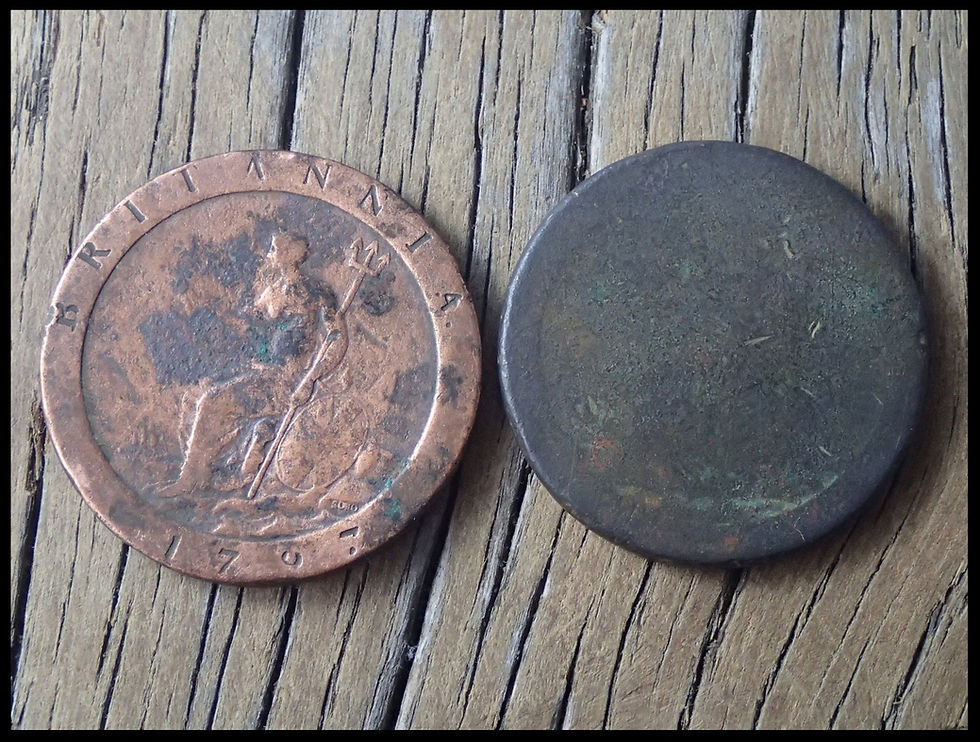How to identify that coin you just can't get a date from
- xlii42
- Jun 4, 2018
- 2 min read
Every detectorist has found (or will find) one. That coin that is so well worn you simply just can't read a date. These are a three of the techniques I use when trying to ID a coin. I can't always get an exact date, but I can generally get a date range.
Examples used in this blog post are a well worn cartwheel penny I found with my detector and a cartwheel penny I purchased from the internet.
Lighting
Light is both a friend and enemy in this instance. You need light to see the coin, but too much inhibits your ability to see subtle changes in the surface of the coin.
I take the coin into a dark room and use a torch to shine light from the side. I move the lighting up and down and watch the shadows looking for a pattern (monarch head or Britannia usually).


On the left is the purchased coin, on the right is the coin found detecting. The lighting is coming from the bottom of the photo.
You can just make out the shape of Britannia on the detected coin, the shield and head / torso stand out best. Note also the thick border easily seen.

This photo was taken with my regular light box set up (diffused lighting coming from the left). Note the defined edges of Britannia on the detected coin are all but gone. You can only see the thick edge of the coin - it was this thick edge that made me initially start to think this was a cartwheel penny and not just a copper slug.
Diameter
Most (if not all) minted coins have a standard diameter for the issue. You can pick up a pair of vernier callipers pretty cheap from a hardware store - I use ones with a digital read out.

Here you see the detected coin measures 35.45mm in diameter.

Here the purchased coin measure 35.78mm. The website I usually refer to for coin IDs is allcoinvalues.com - this website lists the diameter of this penny to be 36mm.
Weight
The last technique I am going to share is weight. Invest in a decent set of scales (unlike the ones in my photos) that will measure to at least 0.1 of a gram.
One day I will get some!

You can see here the weight is 26g, the cartwheel penny has a nominated weight of 28.3g.

The purchased coin weighed 27g.
Given the physical condition of the coin was well worn, I felt the slightly underweight and smaller diameter aspect were still consistent with it being a cartwheel penny, the Britannia shape and thick border supported this. These features indicate the coin was most likely dated in 1797.
You can use these techniques with a good resource like allcoinvalues.com to try an pinpoint a date (or date range). Other things like the direction the monarch is facing, the direction Britannia is facing etc can be useful too.
Good luck with your next ID! I wish you 1700s.






















Comments